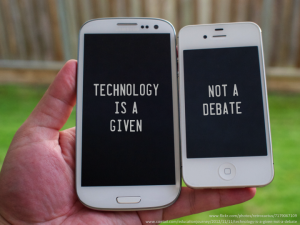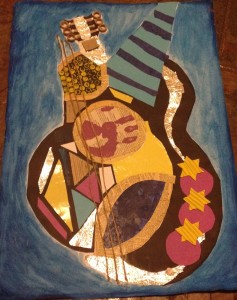Three of the theories discusses in the reading:
Technological determinism
The term was coined by social scientist Thorstein Veblen. It is a an attitude or way of thinking that technology is independent of social influences and that it follows its own course of development. Raymond Williams a cultural analyst who opposed the theory described it below as:
The basic assumption of technological determinism is that a new technology – a printing press or a communications satellite – ‘emerges’ from technical study and experiment. It then changes the society or sector into which it has ‘emerged’. ‘We’ adapt to it because it is the new modern way.

Technological determinism?
Raymond Williams has problems with it and he mainly argued that:
1. Technologies are not independent of society – to some extent they are influenced by our (consumer) needs and desires
2. Technologies are not absolutely determining causes of social change – there is no ‘natural’ course of development
McLuhan: The Medium is the Message
McLuhan says that what is culturally significant about media is the way they alter our perception of the world rather than their content. He has written about the cultural effects after writing was more popular and how we related to each other shifted with the development from ‘orality to literacy’. It was a very technological determinist approach to viewing technology. What is important to note was that in the reading he was quoted as writing that technologies alter the ‘patterns of perception steadily and without any resistance‘.
Baudrillard: The Medium is the Model
Baudrillard took away from McLuhan saying the ‘the medium is the model’. A model for behaviour, perceptions, knowledge of the word, sense of self and reality itself. In terms of reality, he argues that culture is determined by a range of technologically produced ‘simulacra’ – signs that are copies of other signs – and this is creating ‘hyperreal’ conditions. Hyperreal defined as more real than the real. There is an over simulation or more reactions to simulations rather than the ‘real’ thing.
Reacting to television new vs. the world, email vs. vocal communication, computer program vs. social interaction. Or even the action of communicating is more important than what we are communicating leaving the message redundant.
Week 7: Murphie, Andrew, and John Potts. Culture and Technology. New York: Palgrave Macmillan, 2003. Print. ‘Theoretical Frameworks’ extract (PDF)
Via Flickr – Photo credit: www.flickr.com/photos/retrocactus/7179067109

